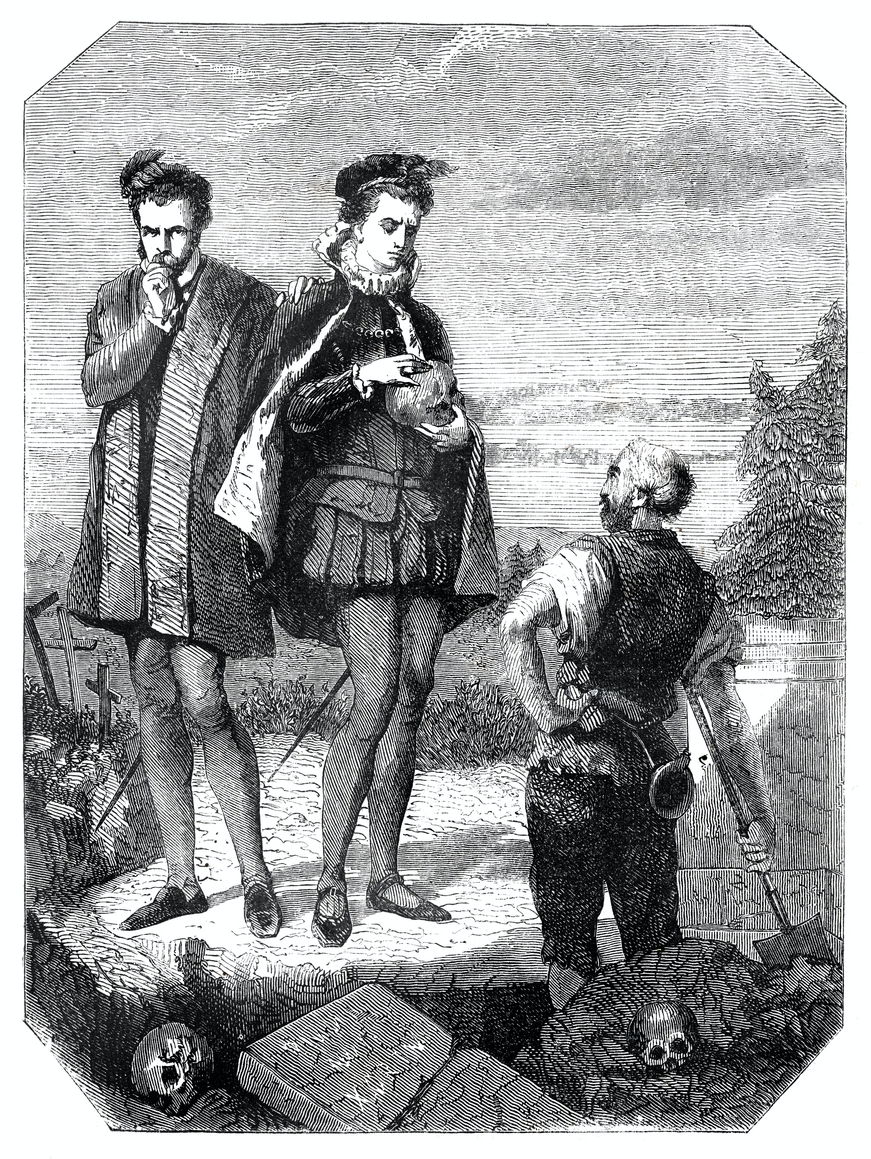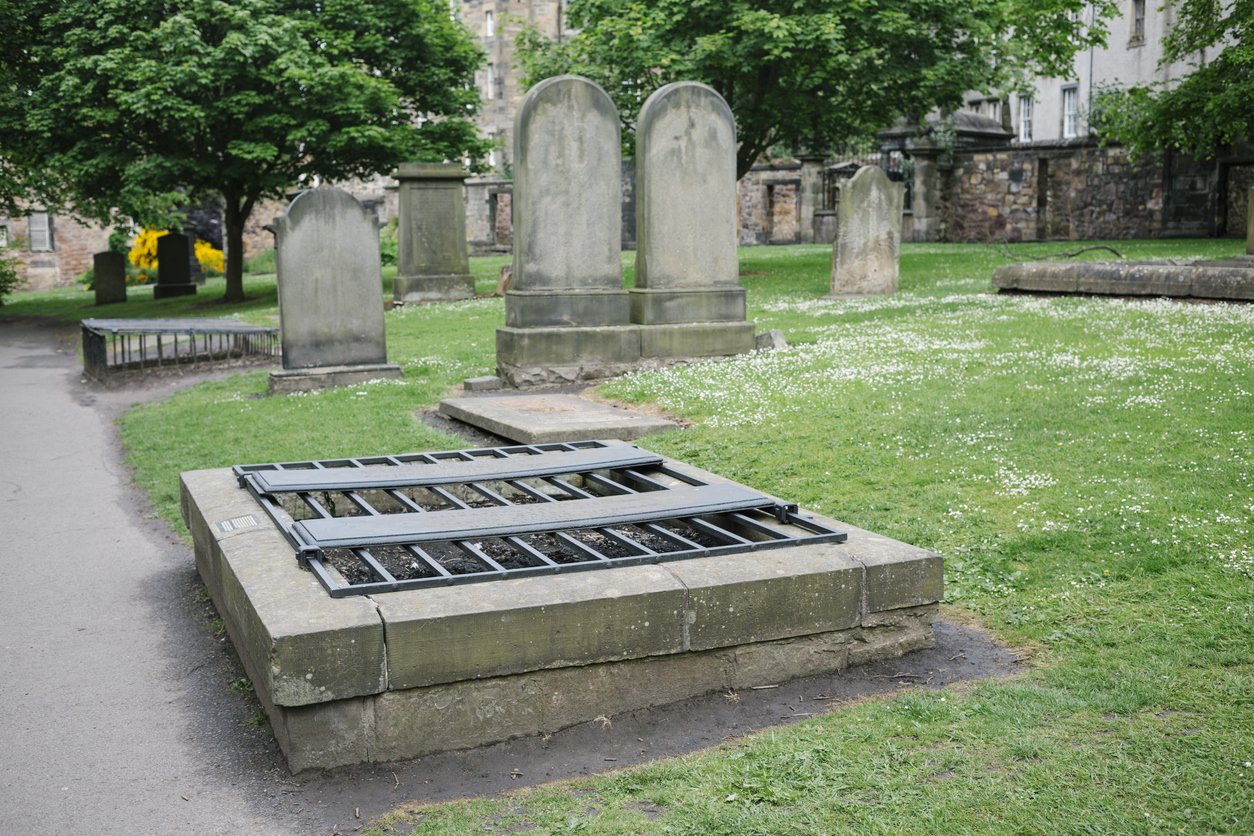Spooky content warning: This blog post contains eerie images and discusses hair-raising topics that may not be suitable for younger or more sensitive readers. Approach with caution if you dare!
As Halloween approaches, we begin to tell spooky tales and follow eerie traditions. While you might be excited about costumes and trick-or-treating, have you ever wondered whether your ancestors held occupations that strayed to the spooky side?
Today, we’ll explore the terrifying trades of your forebears, unearthing details of gravediggers, witches, and other professions that are often associated with the supernatural.
Have you got an ancestor with a spooky speciality? Let us know on facebook, or by email at help@livingdna.com. We’d love to hear about it!
Gravedigger
What is he that builds stronger than either the mason, the shipwright, or the carpenter?
Hamlet, V.i., 46-47

In Shakespeare’s Hamlet, a gravedigger asks his companion this question while standing in an open grave, with the answer being that the 'houses' a gravedigger builds will last "until doomsday". When Hamlet himself arrives on the scene with his friend Horatio, he remarks upon the skulls that have been scattered around by the diggers, picking one up upon discovering that it belonged to his favourite jester and uttering the more famous line:
Alas, poor Yorick! I knew him, Horatio.
Hamlet, V.i., 173
It’s a rather grisly scene to modern readers, as the practice of digging up bones to make space for more new graves is, at least in the western world, no longer common as we now prefer to leave our dearly departed to their rest in the earth.
Graveyards have always held an air of mystery and fear and as caretakers of cemeteries, gravediggers have been seen in the same light purely by association. Responsible for preparing the final resting place of the dead, they have a unique connection to the macabre.
Your ancestors may have been cemetery caretakers, responsible for maintaining the grounds and graves, the final resting places of their friends and neighbours.
Witch
Another profession that has Shakespearian connections, witchcraft in the Western world has long been a source of fascination and fear. For some it still is a deeply spiritual practice, while for others it has meant persecution. Exploring your own ancestral roots might reveal surprising connections to this mystical occupation.
Skilled in herbal medicine and with a reputation for divination, 'cunning folk' often lived on the fringes of society, offering remedies for ailments and protection from malevolent forces. While many cunning folk would have been respected for their skills, some were also accused of witchcraft during times of social and religious upheaval.
The fate of many people - especially women - accused of witchcraft was a tragic one. With witch hunts across Europe and America leading to the deaths of thousands. Investigating your family history might uncover stories of resilience and survival in the face of such accusations. Were your ancestors there at Salem? Or did they witness the trials of the Pendle witches?
Plague doctor
Plague doctors are iconic historical figures, primarily associated with the devastating outbreaks of the bubonic plague that happened in Europe from the 14th to the 17th centuries. These physicians were instantly recognisable due to their distinctive and dramatic attire.
The typical outfit consisted of a long waxed fabric coat, a wide-brimmed hat, leather gloves, and a mask with a long beak-like protrusion. The beak would have been filled with sweet-smelling herbs and flowers, to mask the noxious odours of disease and death. This ensemble was designed to give the wearer some protection from the plague, which was believed to be spread through foul-smelling miasmas in the air.
While their work was crucial, plague doctors were often met with fear and suspicion. Their presence signalled the severity of the outbreak, so they were considered ominous figures. They risked their lives to care for the sick, and their efforts laid the early groundwork for modern epidemiology and the understanding of contagious diseases.
Perhaps one of your ancestors helped to care for the victims of the Black Death, doing their best to ease the discomfort of the afflicted.
Sin eater
Most notably found in regions of England and Wales, sin eaters held a unique and solemn role in their Christian communities.
A sin eater’s primary responsibility was to perform a ritual that involved consuming a meal placed upon or near a recently deceased body. In doing so, they symbolically absorbed the sins of the departed, taking on their spiritual burden. This act was believed to cleanse the soul of the deceased and ensure their peaceful passage into Heaven.
Sin eaters were often shunned and held in low regard, even feared, due to the belief that by ingesting the sins of the dead, they were tainted themselves. They were typically solitary individuals who lived on the fringes of society, and their services were sought out only in times of death. Families would often leave a symbolic coin or token on the body as payment for the sin eater’s services.
Over time, as societies evolved and religious practices changed, the role of sin eaters faded into obscurity. The concept of transferring one’s sins to another is a fascinating and eerie reflection of the human quest for spiritual absolution and fear of the consequences of wrongdoing. Sin eaters, once marginalised figures, now serve as poignant reminders of the complex relationship between life, death, and belief in the supernatural.
Was one of your distant relatives responsible for taking on the sins of their neighbours?
Resurrectionist
Perhaps our grisliest job yet, in the Victorian era, a particularly gruesome business opportunity arose. One that existed in the shadowier realms of legality and morality - the resurrectionists. These individuals were more commonly referred to as the “body snatchers,” and their grim task was to exhume corpses from graves, to supply medical schools with cadavers for anatomical studies.

The demand for cadavers in the 19th century far exceeded the legal supply. Medical schools required bodies for dissection to teach surgeons their craft, and for research, but the Anatomy Act of 1832 limited their procurement to executed criminals. This led to the rise of the resurrectionists, often operating in the dead of night, digging up recently buried bodies.
Their activities were macabre and deeply controversial, as they often obtained their bodies by theft, desecrating graves and causing immense distress to grieving families. The trade in stolen bodies may have been profitable, but it offered a sinister undercurrent to the medical world.
The most notorious resurrectionists were a pair named William Burke and William Hare, who turned their hands to murder-for-profit, killing opportunistically and selling the bodies immediately to a Dr Knox, making a £120 from their grisly trade over 10 months.
Resurrectionists were motivated by financial gain, but they played a significant role in advancing medical knowledge and education of the time. Their actions spurred debates about the ethics of the medical industry and ultimately contributed to the reform of laws governing the procurement of corpses for medical purposes.
As we look into our ancestry, we can discover clues not only about their daily lives but also the rich tapestry of traditions, beliefs, and superstitions that shaped their world. Whether your forebears were healers, caretakers of the dead, or held more sinister places in their society, their occupations often carried a connection to the mystical and the macabre. This halloween, as you celebrate with costumes and spooky tales, take a moment to remember the fascinating histories of of your ancestors who may have walked a fine line between the mundane and the supernatural in their everyday lives.
If you have a spooky ancestral story, let us know on Facebook, our contact form, or by emailing help@livingdna.com.
